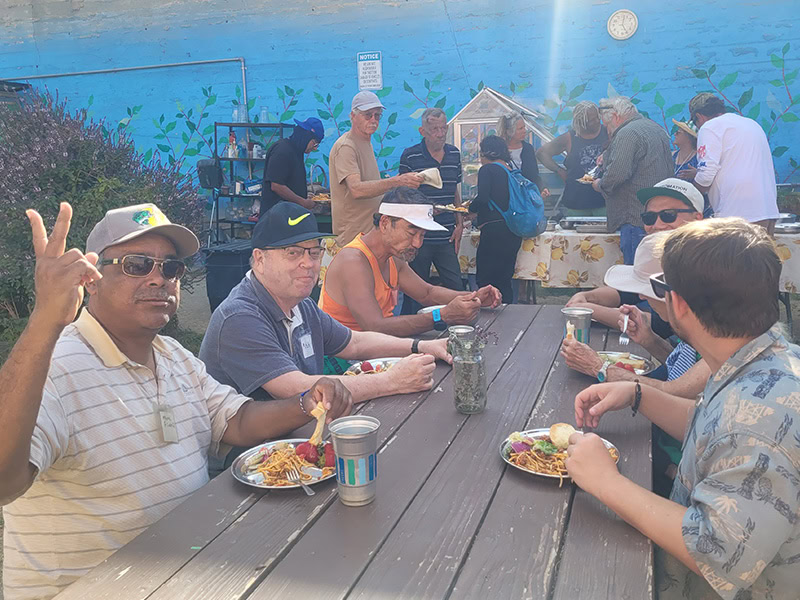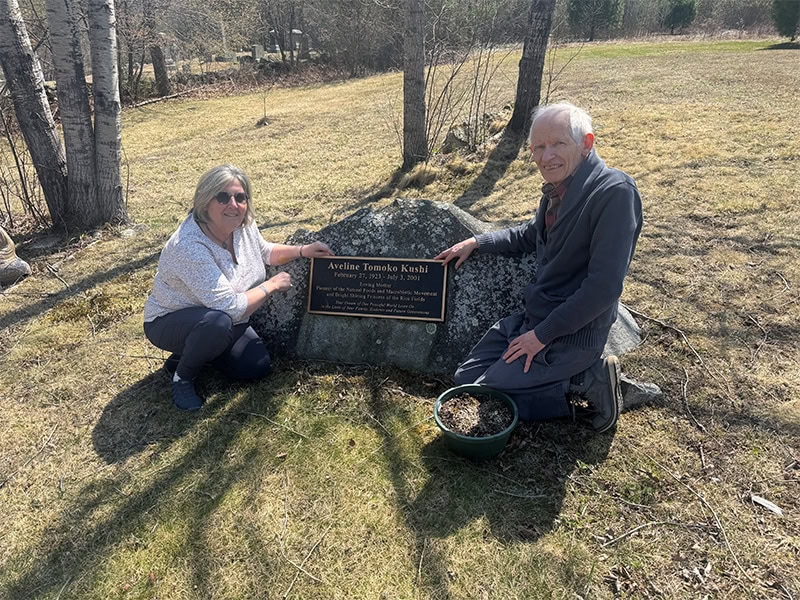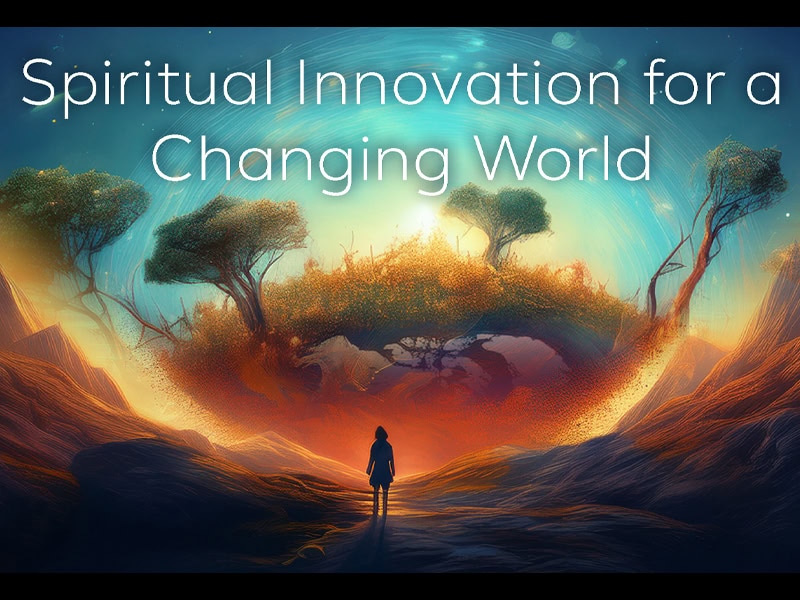Opening of Convention
By Rev. Dr. Jim Lawrence
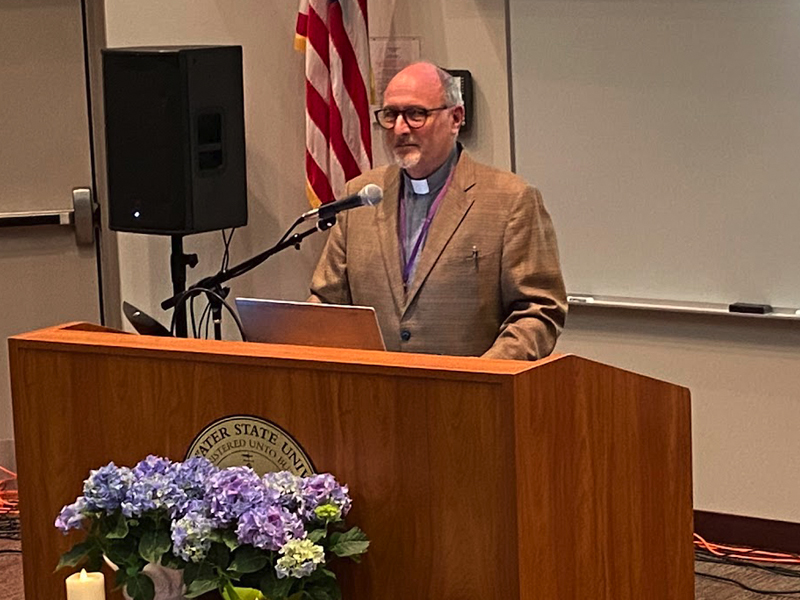
Rev. Dr. Jim Lawrence Welcomes everyone to Convention 2023
Welcome to the 199th Convention of the Swedenborgian Church of North America. Of course, our legal name and the one which we commonly used until about twenty years ago is the General Convention of the New Jerusalem, and that legal incorporated name came the first words of the last chapter of the last book of the Bible, Revelation, which says,
Then the angel showed me the river of the water of life, bright as crystal, flowing from the throne of God and of the Lamb through the middle of the street of the city; also, on either side of the river, the tree of life with its twelve kinds of fruit, yielding its fruit each month. The leaves of the tree were for the healing of the nations (Revelation 22:1–2).
In fact, not only our denomination but every Swedenborgian denomination in the world (and there are at least five) deploys the phrase “New Jerusalem” in their official incorporated language. In their legal incorporated name, every Swedenborgian denomination features the closing and final biblical image: a Holy City New Jerusalem descending from heaven to earth.
A hundred and ninety-nine seems an odd number for this convention considering that we held our official bicentennial way back in 2017 in the Philadelphia area, where it all began for the New Church in America. Due to various years of wars and pandemics, however, led to decisions not to gather for the annual convention, and thus we will not celebrate our actual physical bicentennial of legal denominational gatherings until next year.
A New Church Arises
Today, however, we might go back even further to true American Swedenborgian history to the summer of 1784 when James Glen, a British plantation owner in Guyana, brought copies of Swedenborg’s theological writings into the harbor of Philadelphia and gave a series of public talks there and in multiple locations across four other young states of the new republic. From circulating boxes of Swedenborg’s books from London, reading groups organized, and soon some of those circles evolved into churches with religious services and eventually with consecrated leadership.
Though early on the church in Baltimore had the most members in a single church, Philadelphia remained ground zero for the first quarter-century with the largest number of groups. The Quaker strength in Pennsylvania proved useful as both movements shared similarities in discussing the inner light, and both movements have been framed by some religion historians as “the spiritualist option” in Reformation currents. And not surprisingly, Quakers in the earliest phase provided the most significant channel of conversions into the new fledgling Swedenborgian societies.
The first church building commissioned by Swedenborgians was in Philadelphia and opened on New Year’s Day 1817. It was modeled after the Nunc Licet temple described in True Christianity (2006:508):
One day a magnificent church building appeared to me; it was square in plan with a roof like a crown, with arches above and a raised parapet running around ….Later, when I got closer, I saw there was a Latin inscription over the door, NOW IT IS PERMITTED which is shorthand for the full sentence, “Now it is permitted to enter with the understanding into the mysteries of faith.”
In that same year, since so many societies had cropped up around the eastern seaboard, the idea was sprung to have a “general convention” of representatives from these groups, which was put into action by meeting on May 15, 1817 (the Day of Ascension in the Christian calendar) in the new Nunc Licet temple. Their closing piece of business was to set up the second meeting the following year, also for the Day of Ascension, to be held in the Baltimore church. And the fledgling New Church denomination in American has continued ever since to hold an annual convention.
Convention Splintering
A foremost challenge the new movement faced in its first half-century involved the push-and-pull of whether to adopt a more centralized government or whether to maintain complete autonomy for the local “societies.” Convention was functioning as a loose federation under the congregational form of polity (local groups owning and operating their own ministry), but a broad desire for more coordination was rising among the growing movement. Part of such coordination also meant shared standards, partly to increase identity and presence in the public square, but at the same time such a vision of more unity bred fears of coercion by the stronger regions running roughshod over smaller ones.
This tension around obligations and freedom led to our early history of splitting into multiple Conventions. We weren’t always just one Convention due these very significant disagreements about how to be a larger church. In 1838 Thomas Worcester of the Boston church tried to impose an episcopal form of church government upon the widely dispersed gaggle of Swedenborgian congregations in what infamously became known as “the squeezing rule.” At the twenty-second annual convention, Worcester engineered an edict requiring all societies to become organized according to a new Rule of Order by the following year—or be dropped from the rolls of Convention.
Furor erupted. Resistance took two forms: in the Midwest a rebellion against any kind of centralization developed; and in a mid-Coast region anchored by Philadelphia, resistance rose up against Worcester personally. These doings created new breakaway Conventions called the Western Convention and the Central Convention, while most referred to the old General Convention as “the Eastern Convention.” It took decades for it all to settle down, but finally the Western Convention came back into the fold with older General Convention and accepted some aspects of denominational governance, such as standards and procedures for the path to ordination, and in turn the General Convention agreed to a decentralized congregational polity over a centralized episcopal one. Though some of the congregations in the Central Convention also returned to the General Convention, many dug in and became the sprouting root to a splinter movement that finally formed a new denomination, which we know today as the General Church.
The Little Church with the Big Reach
While many stories of great effort to be the New Church in the right way shape our history, there is one core value we all share: a love for the treasure of Swedenborg’s writings that have given birth to millions of pages of discourse and countless numbers of enriched lives. It is now commonly touted that though Swedenborg has been largely ignored by organized Christianity with very few prominent theologians and writers of other traditions producing any thoughtful study of Swedenborg, at the same time Swedenborg stands at the top of theologians for being engaged by such a long list of celebrated artists, novelists, painters, poets, and sculptors. In point of fact, Swedenborg’s cultural reception in such veins far outreaches the Martin Luthers, John Calvins, and John Wesleys. Religion historians have often noted that the Swedenborgian Church perhaps holds the most lopsided ratio of cultural recognition in relation to size of membership with a considerably high cultural studies recognition despite a quite negligible membership.
One of those famous names among the cultural titans who have engaged Swedenborg in notable and positive ways is Helen Keller, whom we selected to feature for this convention to raise up the new effort at a Helen Keller Center at our Cambridge church. The Practice of Optimism, which is our theme, comes from one of her earliest books completed while still in her twenties, which she had begun writing while still a college student at Radcliffe. I’m personally forever grateful to Helen because it is she who convinced my mother that I did not go off and join a cult. If Helen Keller loved Swedenborg, it was the real deal, and over time mom collected quite a few Swedenborgian books and of course followed the work of our church with interest.
Ever since I’ve been in this church, now for four decades, we’ve always wrestled with why aren’t we bigger? How could something so rich and powerful on the inside manifest itself in such seeming small ways on the outside? Why don’t more people see the New Church vision that we see?
But these are dynamic times. Religion and spirituality today very little resemble religion and spirituality in America a half-century ago. Every organized religion in America today laments the trends dragging their numbers down, while at the same time new modes of spirituality that often have small pop-up manifestations and new livelihoods in virtual spaces do not resemble old fashion brick and mortar churches. New approaches to spiritual life keep appearing and touching peoples’ hearts and minds and lives.
I encourage us to believe in our future, to believe in our ability to meet the challenges of engaging the questions mattering most to people today, to believe in our calling to contribute effectively to the reality of the Holy City New Jerusalem both in our personal lives as well as in a world who in all its sprawling manifestations remains as ever and always our neighbor and our charge.
Read the full issue of the Convention Special 2023 Messenger
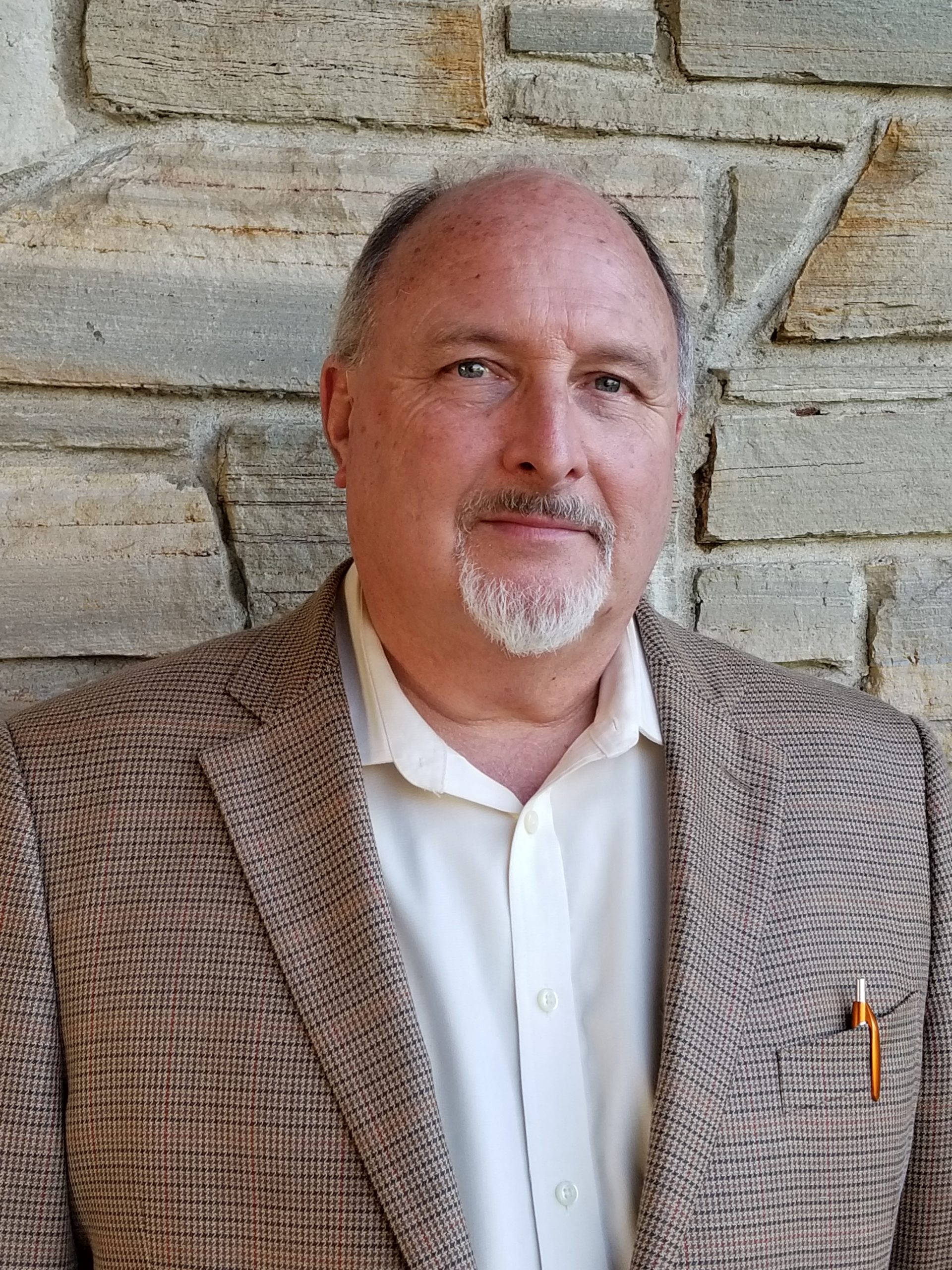
Meet Jim Lawrence
Rev. Dr. Jim Lawrence is the president of the Swedenborgian Church of North America. He was the dean of the Center for Swedenborgian Studies for over twenty years prior to taking on this role.

